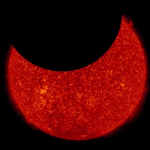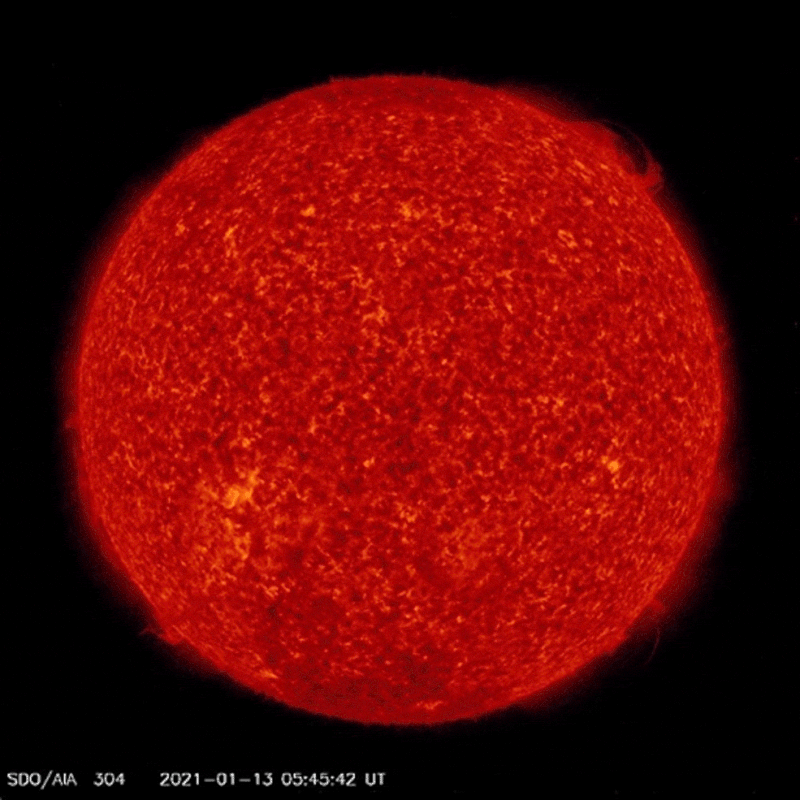

Image via NASA’s Goddard Space Flight Center/ SDO/ Joy Ng.
.
NASA’s hard-working Solar Dynamics Observatory (SDO) captured this image – its first lunar transit of 2021 – on January 13. This isn’t an eclipse in the ordinary sense; no eclipse was seen from Earth’s surface. But, in its inclined circular orbit 23,000 miles (37,000 km) above Earth, SDO sees the moon cross in front of the sun between two and five times every year.
The January 13 transit, as seen from SDO, lasted nearly 30 minutes, between 12:56 and 1:25 a.m. EST on January 13. During this time, NASA said:
…the moon happened to cover two of the spacecraft’s fine-guidance sensors, causing its view of the sun to jitter slightly. SDO recovered a steady view of the sun shortly after the transit.
SDO captures the sun continuously at a range of wavelengths. The transit images above were captured in a wavelength of extreme ultraviolet light. This kind of light is invisible to human eyes. It’s colorized here in red. Go to SDO’s website to see the sun at multiple wavelengths, as it is right now.
Bottom line: NASA SDO’s first lunar transit of 2021.
from EarthSky https://ift.tt/2LUYAZu


Image via NASA’s Goddard Space Flight Center/ SDO/ Joy Ng.
.
NASA’s hard-working Solar Dynamics Observatory (SDO) captured this image – its first lunar transit of 2021 – on January 13. This isn’t an eclipse in the ordinary sense; no eclipse was seen from Earth’s surface. But, in its inclined circular orbit 23,000 miles (37,000 km) above Earth, SDO sees the moon cross in front of the sun between two and five times every year.
The January 13 transit, as seen from SDO, lasted nearly 30 minutes, between 12:56 and 1:25 a.m. EST on January 13. During this time, NASA said:
…the moon happened to cover two of the spacecraft’s fine-guidance sensors, causing its view of the sun to jitter slightly. SDO recovered a steady view of the sun shortly after the transit.
SDO captures the sun continuously at a range of wavelengths. The transit images above were captured in a wavelength of extreme ultraviolet light. This kind of light is invisible to human eyes. It’s colorized here in red. Go to SDO’s website to see the sun at multiple wavelengths, as it is right now.
Bottom line: NASA SDO’s first lunar transit of 2021.
from EarthSky https://ift.tt/2LUYAZu

Aucun commentaire:
Enregistrer un commentaire